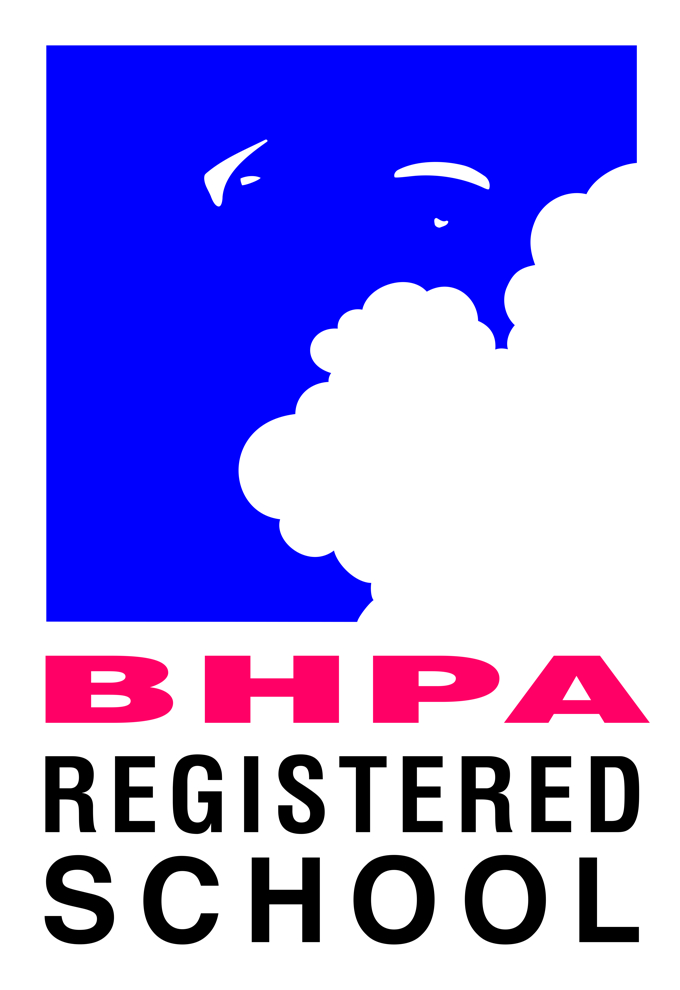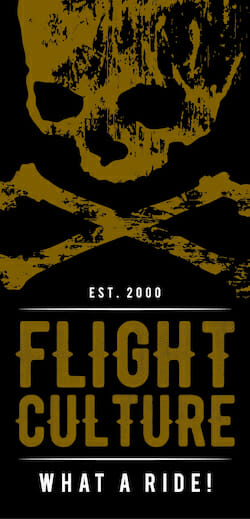Course outline
Paragliding is the simplest and most basic form of unpowered flight available. The necessary equipment fits into a single rucksack and can be made ready for flight in a few minutes. There are four basic parts to the equipment; the glider (a rectangular area of cloth which looks a bit like a square parachute but is fundamentally quite different), a harness or seat, a helmet, and an emergency parachute system which the vast majority of pilots will never use (but you should still have for that one in a million chance).
Once you have prepared your equipment, you can launch yourself from a hillside and soar like a bird, controlling your glider by a combination of moving yourself (weight shift) as well as via the control handles. If you fly into an area where the air is rising faster than your glider is sinking, you will also rise. It is by using areas of rising air that it is possible to make flights of several hours.
The landing is straightforward and gentle. Sometimes we land at the bottom of the hill, sometimes back on top where we took off from, and sometimes we fly for many miles over the countryside and land somewhere completely new.
Paramotoring is also incredibly easy and with a petrol driven fan you can take off from flat fields and fly for many hours. Paramotoring will allow you to experience powered flight without all the complications of flying microlights or light aircraft. Again, all of the equipment can fit in the boot of a normal family car.
Your first day
Your first day starts with an introduction to the flying site and equipment – teaching you how to inspect the glider and harness. We’ll then show you some basic exercises before you learn to inflate and control your glider on the ground. Inflating your glider will require practise but, once mastered, all the rest is easy!
After this you’ll be ready to make your first flight. Initially your flights will be small; maybe three or four feet above the ground but the flights will increase in height as the day progresses. By the end of your first day you could be making flights where you’re 50 ft above the ground.
All equipment provided and BHPA but membership required
Getting Started - Elementary Pilot (EP) syllabus
The Elementary Pilot will take you from being a complete beginner to the point where you are able (in a limited range of conditions) to arrive at a hill, prepare your equipment, take off, and fly down to a landing field at the bottom of the hill. You will be able to link left and right turns and to land under full control at a landing point of your choosing. In order to achieve this you will have come up with a flight plan, which you will have discussed with your instructor.
Your first day will be as described above and subsequent days will consolidate your understanding and skills.
For the Elementary Pilot (EP) qualification it will generally take 3-4 full days to complete all required exercises and the theory test (notes & lecture are included).
Cost: varies depending on location
(All equipment provided)
BHPA membership is required.
Moving on – Club Pilot (CP) syllabus
The next step is working towards your Club Pilot qualification which will allow you to fly unsupervised. The main part of this training is to teach you to fly using lifting air (soaring). You’ll learn a whole range of skills to improve your flying, including; top landing, slope landing, rapid descent techniques, how to accelerate your glider, as well as improving your control of the glider.
We’ll teach you a number of different ways to initiate turns and explain the benefits of each. A full set of Flight Culture study notes and lectures will be given to help you prepare for the written exam.
Once you’ve completed the Elementary Pilot course, the Club Pilot syllabus usually takes another five or six days.
Most students purchase kit during their Club Pilot training so that they become familiar with their own equipment. We’re more than happy to help advise and source suitable equipment.
Cost: £260.00 per day for UK 1 to 1 tuition
(Equipment can be provided if required. BHPA membership is required)
Coaching
£110.00 per day
(This does not include equipment, although we can provide it if required. BHPA membership is required.
If you’re already qualified but feel that you need a little more help; maybe it’s just been a while since you flew and you’re a bit rusty or perhaps you’re trying to gain your Pilot or Advanced Pilot rating and would like to work your way through some of the syllabus, then coaching is the answer for you. We’ll get you to the right site, give you a site briefing and also discuss your goals or perhaps help you set some if you’re looking for direction. Coaching sessions aren’t normally run using radios (we’ll always have them) but rather by briefing and debriefing.
Advanced glider control course – SIV
SIV (simulation d’incidence en vol) is a manoeuvres course designed to acquaint the pilot with unstable flight regimes; what initiates them, how to recognise them, and how to exit them safely. Our SIV course is aimed at a wide range of pilots, is suitable for all qualified pilots (CP) and should be regarded as an essential step in the development of your piloting skills.
We begin with basic pitch control and then move on to wing-overs and big ears. The next stage covers collapses, both symmetric and asymmetric before moving on to stalls and spins.
If you master all of these skills we can go on to practice spirals, SATs and helicos and even practice reserve deployment if you wish.
All flights are filmed for debriefing.
We provide an auto-inflation life jacket,a radio and we have a dedicated rescue boat which will be on hand for each flight.
This course takes place in Lugano, Switzerland and is run over four days although we have a fifth day in case of bad weather. You’ll be able to make three flights each day and will have about 1000m above the lake when you begin your manoeuvres.
£1440.00 for the course
(This does not include equipment)
Tandem Training course
You must be Pilot rated, have at least 250 hours of airtime, with tidy and confident flying skills and be very good at ground handling. If you are missing any of these pre-requisites, we can teach you but you’ll need to master them all before undertaking your tandem pilot training.
You’ll be taught a whole range of practical skills and theory and complete a minimum of 20 flights as pilot in command. You’ll learn the differences between flying a tandem and solo glider and how your solo techniques need to be modified. We’ll provide you with a set of notes to help you pass the theory examination.
We provide all equipment and you will fly at least two different wings as well as a selection of tandem and passenger harnesses.
£1400.00 for the nine day course.
(Equipment will be provided. BHPA membership required.
Paramotoring
If you want to experience powered flight, paramotoring is the easiest option and on a warm summer evening you can be ready to take off in just a few minutes. Your flight can take you up hundreds or even thousands of feet into the sky and for many miles over the countryside. Unlike a conventional aircraft, once you switch the engine off you revert to being a glider and retain complete control.
In order to paramotor safely you will need to first learn basic paragliding skills. This will include the full BHPA Elementary Pilot course as well as a shortened Club Pilot course (you won’t learn the soaring skills). Your paramotor training will cover two sections; ground school, which covers equipment, weather and theory, then the practical section covering pre-motorized flights, motor unit ground work, and, finally, powered flight. For a complete beginner the training usually takes about eight to ten days although an experienced Club Pilot can do a conversion course in three days. This will give you a BHPA restricted qualification and allow you to fly in the vicinity of your take off point. For the full qualification you’ll need to come back for another two days training which will teach you how to fly cross country.
We teach exclusivly on Parajet paramotors.
We run 1 to 1 instruction in the UK during the summer months but otherwise we teach paramotoring at The Para Lab (see The Para Lab)
£200.00 per day in theUK
(This includes equipment but the student will be responsible for any breakages)
Ready to fly? Get in touch with us today.
Upcoming trips

We are proud to be recognised by the British Hang Gliding and Paragliding Association.
